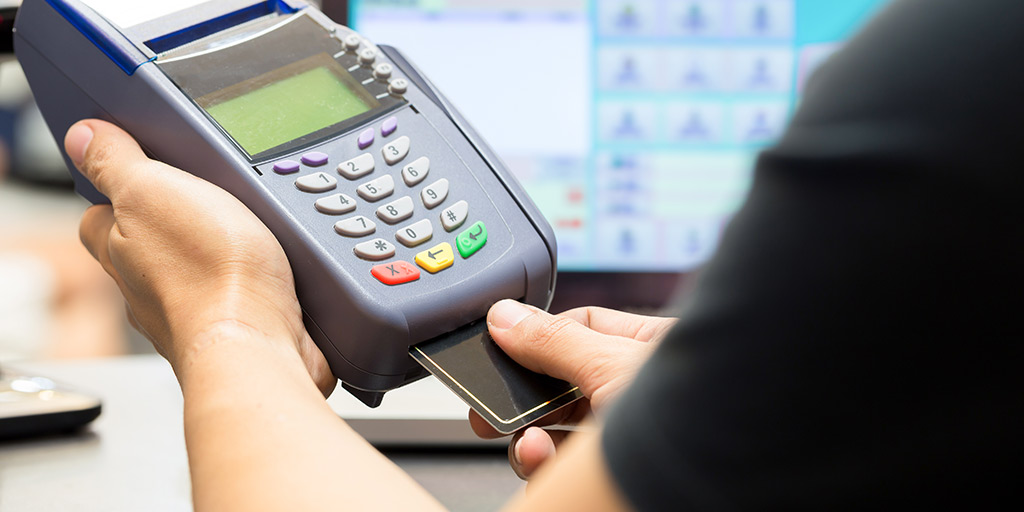Yesterday, we discussed the ways employees could potentially steal from the restaurants where they work. Unfortunately, staff members are not the only ones walking into your restaurant looking to take advantage of you.
When it comes to both diners and vendors, standing up to scams and theft needs to be done with extreme care. After all, you never want to accuse an innocent supporter of your business of stealing from it. It’s simply important to know what behaviors to watch out for — and to be prepared with specific responses based on the situation.
Dry Cleaning Bills
Imagine this scenario: you get a letter, phone call, or a person coming in who claims to be a past customer. They tell you that a server spilled soup on their suit and they were promised that the dry cleaning bill would be paid for by the restaurant.
When you’re not the only manager on staff, it’s easy to just assume this happened on someone else’s shift and to write up a check for the bill. Scammers rely on this assumption.
The best way to avoid this scam is to train your managers how to handle when something spills on a customer’s clothes: hand the customer a business card with the date, time, and your initials. That way, when the diner brings in the bill and the business card, you can confirm with that particular manager that the story checks out. Even if the diner has claimed to have lost the business card, you can ask them about the date, time, and what they had ordered to get a sense if their claim is real. If the manager has left a note at the host stand about the incident, it makes confirming the spill even easier.
The Casual Dine and Dash
This is perhaps the oldest trick in the book. Whether it’s a not-so-graceful climb out the bathroom window or pretending to walk outside to take a phone call or have a smoke, the “dine and dash” can mean losing a whole table turn worth of profit for your restaurant.
While not all quick phone calls mean the diner is trying to run without paying, it’s a good idea to trust your instincts. If the guest needs to step outside for a moment (especially after finishing their meal), it’s totally reasonable to ask them to settle their bill before walking out. Just make sure to then run their check quickly – if it’s an emergency call they have to make, they’ll appreciate your speediness.
“There’s a _____ in my food”
This is another very old trick in the restaurant scammer’s playbook. The diner eats most or all of their food, puts down something inedible (a strand of hair, a bug, etc.) and demands to see the manager to complain and request the meal is comped. This is tricky because unless you have cameras in your dining room or see them do it, you generally can’t prove whether they’re telling the truth or not.
For most of these cases, the best choice is to believe the customer. However, if it’s something bizarre and specific (like a piece of metal that doesn’t look like it’s from any appliance in your kitchen) immediately Google it, looking for a scam in your area. It could very well turn out that this diner has been pulling the same scheme in restaurants throughout your community!

Fake Injuries
There’s always a chance a customer will get injured on your premises. And having your insurance up-to-date is important for that reason and many more.
But there’s also always the chance that a customer will fake an injury while on your premises in order to threaten to sue you. As in the cases above, you should generally take a customer seriously if they claim injury due to an occurrence at your establishment.
However, the way to protect yourself is constant vigilance — and thorough reporting — on safety conditions in your restaurant. This includes putting down wet floor signs after mopping, regularly inspecting tables and chairs for sturdiness, and making sure hot drinks are still within drinking temperature (because yes, severe burns from very hot coffee do happen in the food industry. It’s not just an urban legend!).
While accidents may still happen, making these precautions part of your routine every shift can help you prove you did everything you could to provide a safe environment in the case of a fake reporting of injury.
Vendor Theft
While most vendors are trustworthy and professional, untrustworthy vendors tend to steal from restaurants in very specific ways. They can bring lower quality or damaged ingredients in their delivery, but keep the higher price reserved for higher quality goods. They can charge for a larger quantity of ingredients than what they’ve supplied. They can simply charge you a higher rate without telling you.
This is where careful processing of delivery intake is absolutely necessary. Managers should be meticulous when checking every delivery for quality, quantity, freshness, and cost. It’s when a manager signs off on deliveries without properly processing them that untrustworthy vendors start to think they can get away with shady practices. And obviously doing thorough research ahead of time — investigating your vendors before signing on — will help ensure you’re working with the right people.
Want to dig a little deeper? We look at how to manage your restaurant bar inventory — including how to prevent theft.






